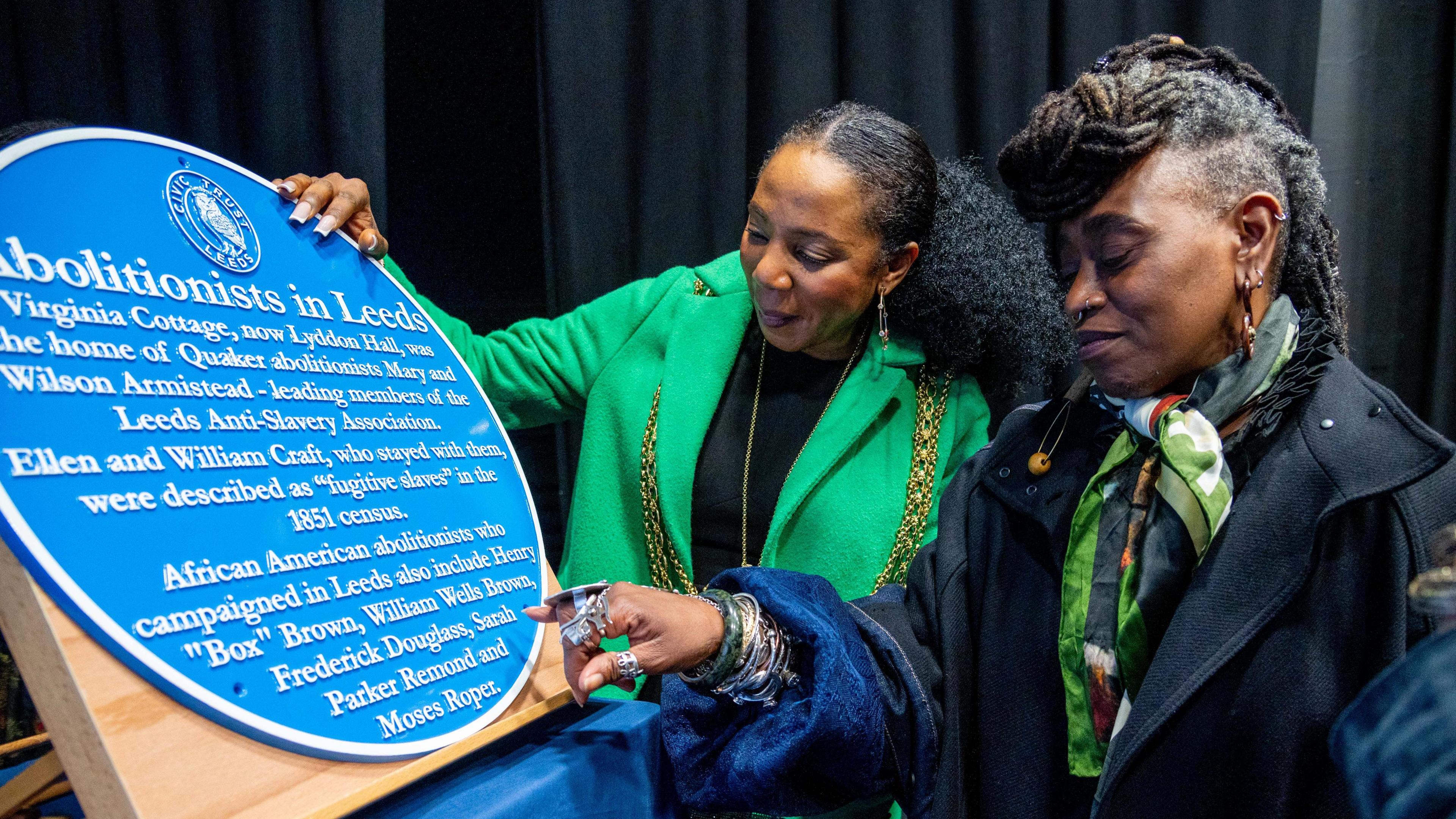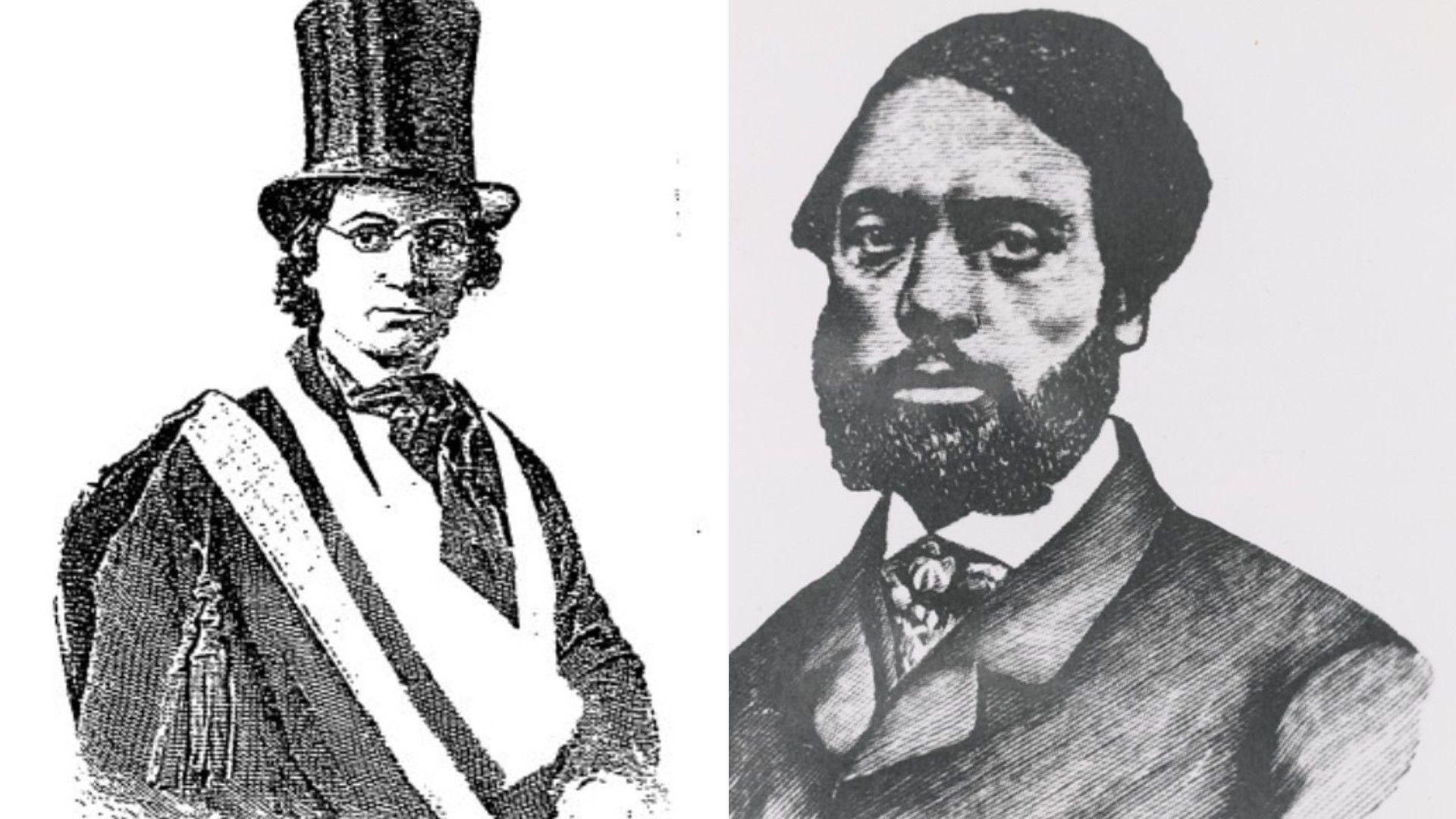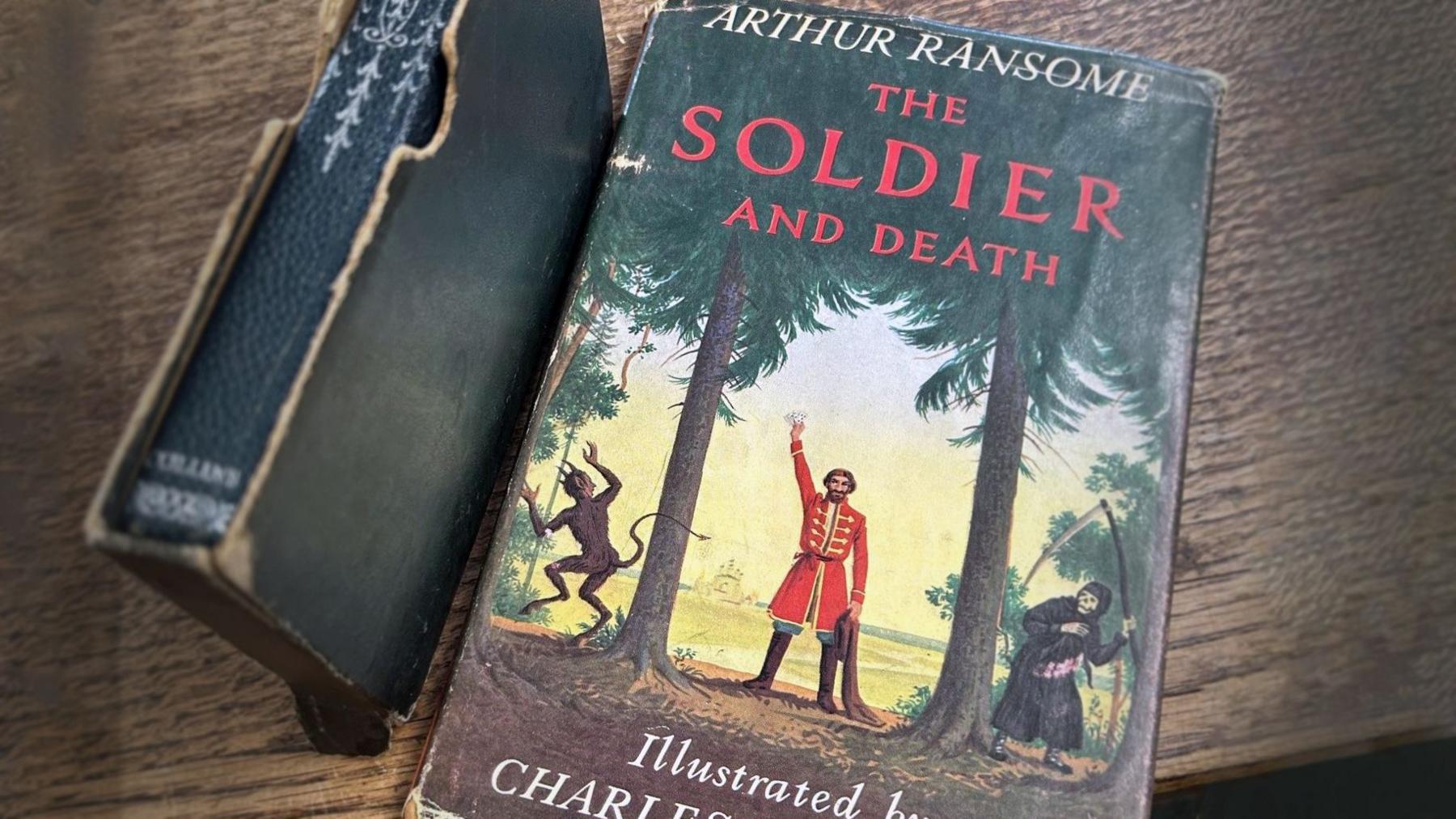Blue plaque honours city's anti-slavery heritage

Abigail Marshall Katung, Lord Mayor of Leeds, and poet Khadijah Ibrahim view the plaque honouring Leeds' links to the anti-slavery movement
- Published
A blue plaque has been unveiled at the University of Leeds to honour the city's links to the anti-slavery movement.
Quaker activists Mary and Wilson Armistead, who lived at Lyddon Hall - now a student residence - were leading members of the Leeds Anti-Slavery Association during the 1800s.
Wilson's opposition to slavery was evident in a number of books he wrote, including one where he described it as "the most extensive and extraordinary system of crime the world ever witnessed".
Prof Bridget Bennett, from the university’s School of English, said the campaign for the plaque had been ongoing for a number of years.

Ellen Craft disguised herself as a rich white man to aid their escape
As well as commemorating the Armisteads, the plaque, commissioned by Leeds Civic Trust, honours the story of American abolitionists Ellen and William Craft.
Born into slavery in Georgia, the couple travelled through the US in 1848 to escape enslavement.
Ellen cut her hair short and wore men’s clothes to disguise herself as a rich white man travelling with William, who posed as a personal servant.
The Fugitive Slave Act of 1850 made it legal for emancipated slaves to be pursued by bounty hunters in the US, so many fugitives left for Canada or Britain to escape recapture.
As a result the Crafts fled to England where they continued their abolitionist work, lecturing in cities and towns.
They stayed with the Armisteads in Leeds and when the census was taken in 1851 Wilson famously recorded his guests as "fugitive slaves".
'Set record straight'
Another name included on the plaque is Henry “Box” Brown who escaped slavery in Virginia by concealing himself in a box which was posted to Philadelphia.
In 1851, he re-enacted his journey in the UK, traveling in a box by rail from Bradford to Leeds as part of anti-slavery campaigning.
The plaque was unveiled on Tuesday during an event which included a black history walk and a lecture by Vanderbilt University's Prof Richard Blackett, a leading historian of the abolitionist movement in the US.
Leeds Civic Trust director Martin Hamilton said: “The abolitionist heritage of our city deserves to be better known and we hope that this plaque will help to set the record straight.”
Listen to highlights from West Yorkshire on BBC Sounds, catch up with the latest episode of Look North or tell us a story you think we should be covering here, external.
Related topics
More stories like this
- Published28 July 2024

- Published23 August 2023
